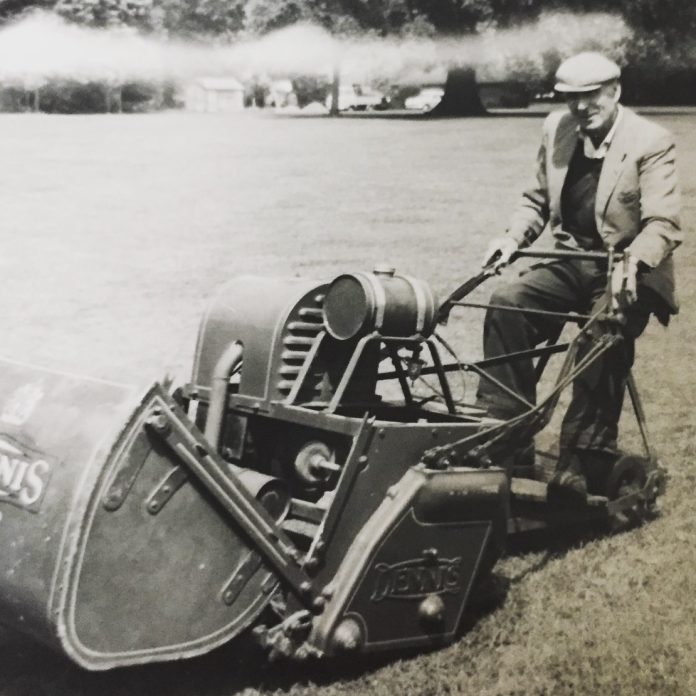Welcome to The Local Gardener, the podcast where we dig deep into the roots of gardening history and explore the tools that have transformed our outdoor spaces. Today we’ll trace the fascinating evolution of garden machinery. From scythes and sickles to battery-powered devices, we’ll uncover how each invention revolutionized the way we care for our gardens.
The Manual Era (Pre-19th Century)
Our story begins with manual tools. Before engines or electricity, gardeners relied on simple hand tools like scythes and sickles, dating back thousands of years. These tools required skill and strength but were indispensable for cutting grass, crops, and weeds.
Pruning and shaping were done with hand shears and basic saws. Hedge shears, first popularized in the 18th century, became the gardener’s tool of choice for crafting intricate hedges and topiaries, especially in formal European gardens.
In 1830, the gardening world changed forever. Edwin Budding of Gloucestershire invented the reel mower. Inspired by textile machinery, his cylindrical mower delivered precision cutting, making it perfect for the finely manicured lawns of the Victorian era.
The Age of Mechanization (19th–Early 20th Century)
By the mid-19th century, innovation accelerated. Larger estates adopted horse-drawn reel mowers and even steam-powered mowers, but these were cumbersome and costly.
A major breakthrough came in 1902, when Ransomes, a British company, introduced the first motor-powered reel mower. This invention allowed for faster and more efficient lawn care.
In 1926, Andreas Stihl, a German engineer, developed the chainsaw, initially for forestry. By the mid-20th century, smaller models were adapted for tree pruning and garden use. And in 1948, Australian engineer Lawrence Hall designed the first rotary mower, featuring a horizontal spinning blade that could tackle tough, uneven grass.
Enter the Electric Era (1940s–1970s)
The post-war era saw electricity reshape garden tools. In the 1940s, the first electric hedge trimmers hit the market, making hedge maintenance quicker and less labor-intensive.
Then, in the 1950s, garden vacuums and blowers made their debut. While there’s no single inventor credited, Japanese companies like Echo (then Kyoritsu Noki) were instrumental in developing early handheld gas-powered blowers. By the 1960s, leaf blowers became widely available, streamlining the laborious task of raking leaves.
The invention of the line trimmer—or “strimmer”—by George Ballas in 1971 was another milestone. Ballas got the idea while watching a car wash’s rotating brushes and created a tool with a nylon line to cut grass along edges and tight spaces.
The Battery Revolution (1990s–2000s)
The 1990s marked the rise of battery-powered tools, thanks to advancements in rechargeable batteries. These tools combined the mobility of gas-powered devices with quieter, cleaner operation.
Blowers and vacuums were among the first to go cordless. Echo, Stihl, and other major brands introduced models that used lithium-ion batteries to deliver power without emissions.
Pruning also evolved with the advent of battery-powered pruners. These devices, featuring motorized blades, allowed for precise cuts with minimal effort, especially beneficial for older gardeners or those with limited hand strength.
Smart and Sustainable Tools (2010s–Present)
By the 2010s, garden tools embraced smart technology. Robotic mowers like the Husqvarna Automower, introduced in 1995, became more advanced, featuring GPS mapping and AI-powered cutting patterns.
Smart tools weren’t limited to mowers. Modern blowers and vacuums now integrate with apps, allowing users to control power settings and monitor battery life.
Sustainability has also become a priority. Solar-powered tools, ultra-efficient batteries, and mulching mowers—designed to recycle grass clippings as fertilizer—are leading the charge in eco-friendly gardening.
A Look Ahead
So, what’s next? The future of garden tools lies in AI, automation, and renewable energy. Imagine pruners that diagnose plant health as they cut or blowers that compost leaves while you work.
From the scythe to the robotic mower, every innovation has made gardening easier and more efficient. Whether you’re using a manual pruner or a smart blower, you’re part of this incredible journey.
Thank you for joining me on this exploration of garden tool history. Don’t forget to subscribe to The Local Gardener for more insights into gardening traditions and technology. Until next time, happy gardening!




